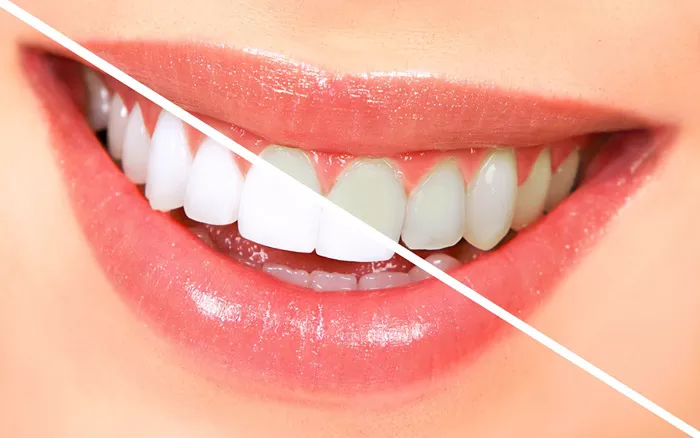Teeth whitening is a popular dental procedure aimed at improving the color and brightness of teeth. With so many products on the market, choosing the right ingredients can be confusing. The best whitening agents not only brighten teeth but also maintain oral health without causing harm to gums or enamel. This article highlights the 5 best ingredients for teeth whitening, explaining how they work and why they are effective.
1. Hydrogen Peroxide
What is Hydrogen Peroxide?
Hydrogen peroxide is a common and powerful whitening agent used in many dental products. It works as an oxidizing agent, breaking down stains on the tooth surface. Dentists often use hydrogen peroxide in professional whitening treatments due to its high effectiveness.
How Hydrogen Peroxide Whitens Teeth
When applied, hydrogen peroxide penetrates the enamel and breaks down complex molecules that cause discoloration. This chemical reaction results in a lighter, brighter appearance of the teeth.
Benefits and Considerations
Hydrogen peroxide provides fast and noticeable whitening results. However, high concentrations may cause gum inflammation or sensitivity. It’s important to follow recommended concentrations and use under professional guidance to avoid gum disease risks.
2. Carbamide Peroxide
Understanding Carbamide Peroxide
Carbamide peroxide is another popular whitening ingredient. It breaks down into hydrogen peroxide and urea, releasing a slower, more controlled whitening effect.
Mechanism of Action
The gradual release of hydrogen peroxide allows for longer contact time with the teeth. This results in less irritation to the gums and enamel compared to direct hydrogen peroxide application.
Advantages in Teeth Whitening
Carbamide peroxide is commonly used in at-home whitening kits due to its mildness and effectiveness. It minimizes gum inflammation and reduces the risk of gum disease caused by harsh whitening agents.
3. Sodium Bicarbonate (Baking Soda)
What is Sodium Bicarbonate?
Sodium bicarbonate, or baking soda, is a natural abrasive ingredient. It is widely used in toothpaste to gently polish teeth and remove surface stains.
How Sodium Bicarbonate Works
Its mild abrasive properties help scrub away plaque, food debris, and light stains. Additionally, baking soda neutralizes acids in the mouth, which helps prevent gum disease and gum inflammation.
Health Benefits
Besides whitening, sodium bicarbonate promotes a healthy oral environment by balancing mouth pH. This reduces bacterial growth and supports gum health, making it a beneficial ingredient for overall dental care.
4. Activated Charcoal
Introduction to Activated Charcoal
Activated charcoal has gained popularity as a natural whitening agent. It is made by heating carbon-rich materials and activating them to increase surface area for adsorption.
Whitening Action of Activated Charcoal
Activated charcoal works by absorbing surface stains and toxins from the teeth. It effectively removes stains caused by coffee, tea, and tobacco without damaging enamel or gums.
Safety and Efficacy
When used correctly, activated charcoal can brighten teeth while reducing gum inflammation. However, excessive use might lead to enamel abrasion. It’s best used occasionally as a supplement to regular dental hygiene.
5. Papain (Papaya Enzyme)
What is Papain?
Papain is an enzyme derived from papaya fruit. It acts as a natural cleanser and stain remover in some whitening products.
How Papain Whitens Teeth
Papain breaks down protein chains that hold stains on the teeth. This enzymatic action helps lighten discoloration gently, making it suitable for sensitive gums prone to gum inflammation.
Benefits for Oral Health
Besides whitening, papain aids in reducing bacterial growth, which supports gum health and helps prevent gum disease. Its gentle nature makes it a preferred ingredient in natural whitening formulations.
Important Considerations for Teeth Whitening
Protecting Your Gums
Some whitening ingredients can irritate gums, causing gum inflammation or exacerbating existing gum disease. It is essential to avoid contact of whitening agents with the soft tissues and consult with a dental professional before starting treatment.
Maintaining Oral Health
Whitening should never replace daily oral hygiene practices such as brushing, flossing, and regular dental visits. Good oral hygiene helps prevent plaque buildup, cavities, and gum disease, ensuring a healthy, bright smile.
Choosing the Right Product
Always select teeth whitening products with clinically tested ingredients. Avoid harsh chemicals or abrasive substances that can damage enamel or cause gum inflammation. Professional guidance ensures safe and effective whitening.
Conclusion
The 5 best ingredients for teeth whitening—hydrogen peroxide, carbamide peroxide, sodium bicarbonate, activated charcoal, and papain—offer effective and safe ways to achieve a brighter smile. Understanding their properties helps you choose products that not only whiten but also support oral health by preventing gum inflammation and gum disease. Always consult a dental care expert before beginning any whitening regimen to ensure the best results with minimal risks.

